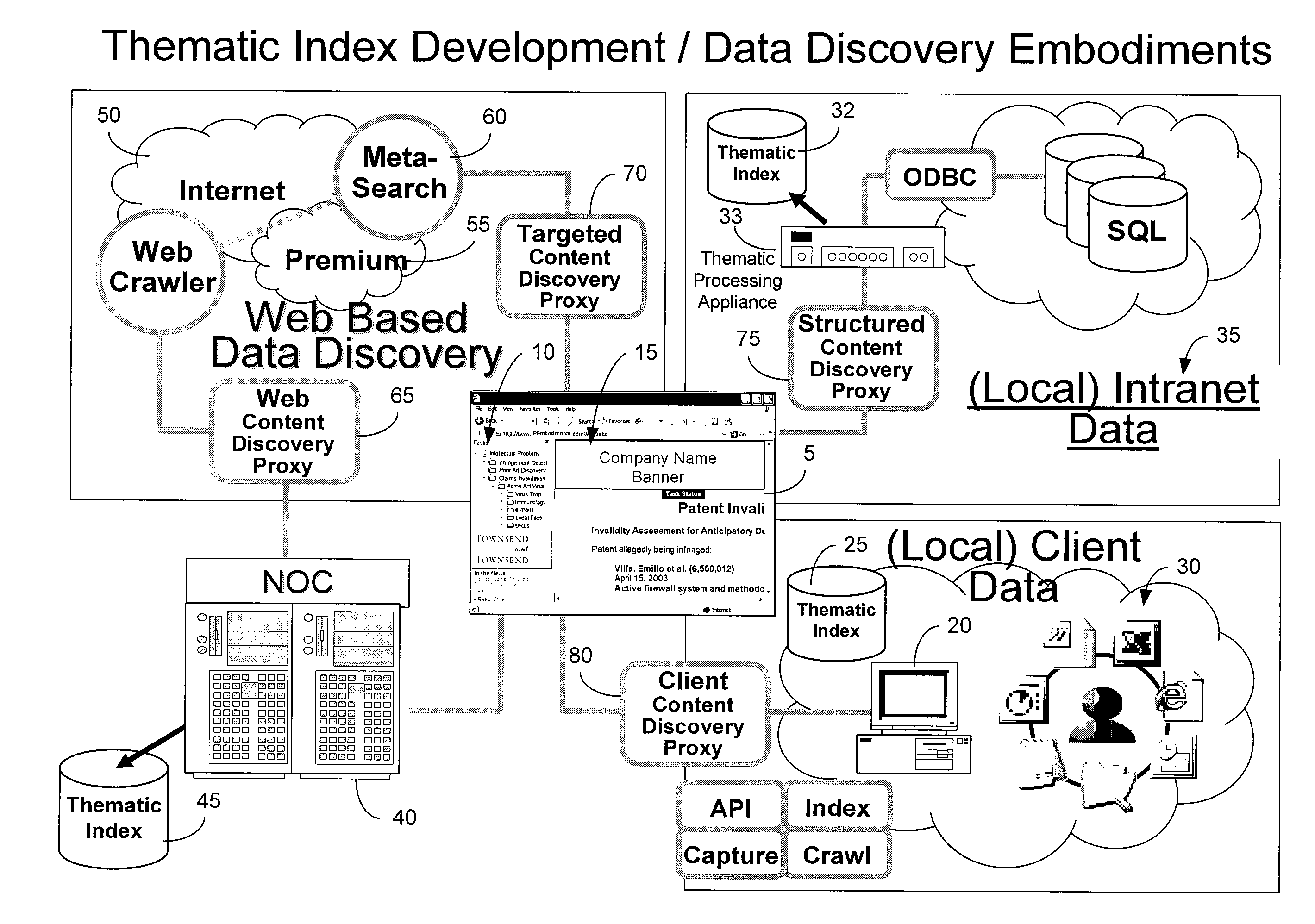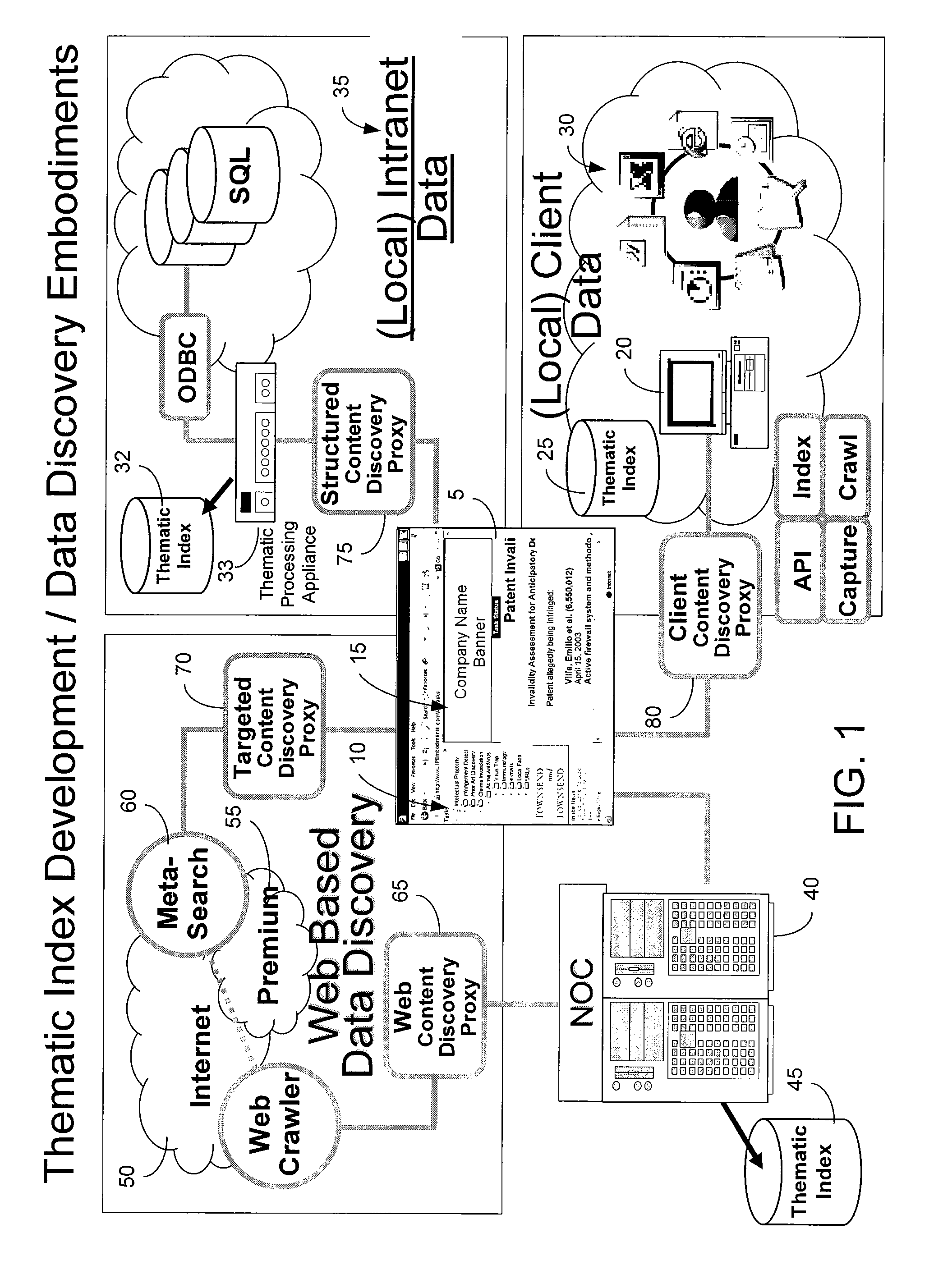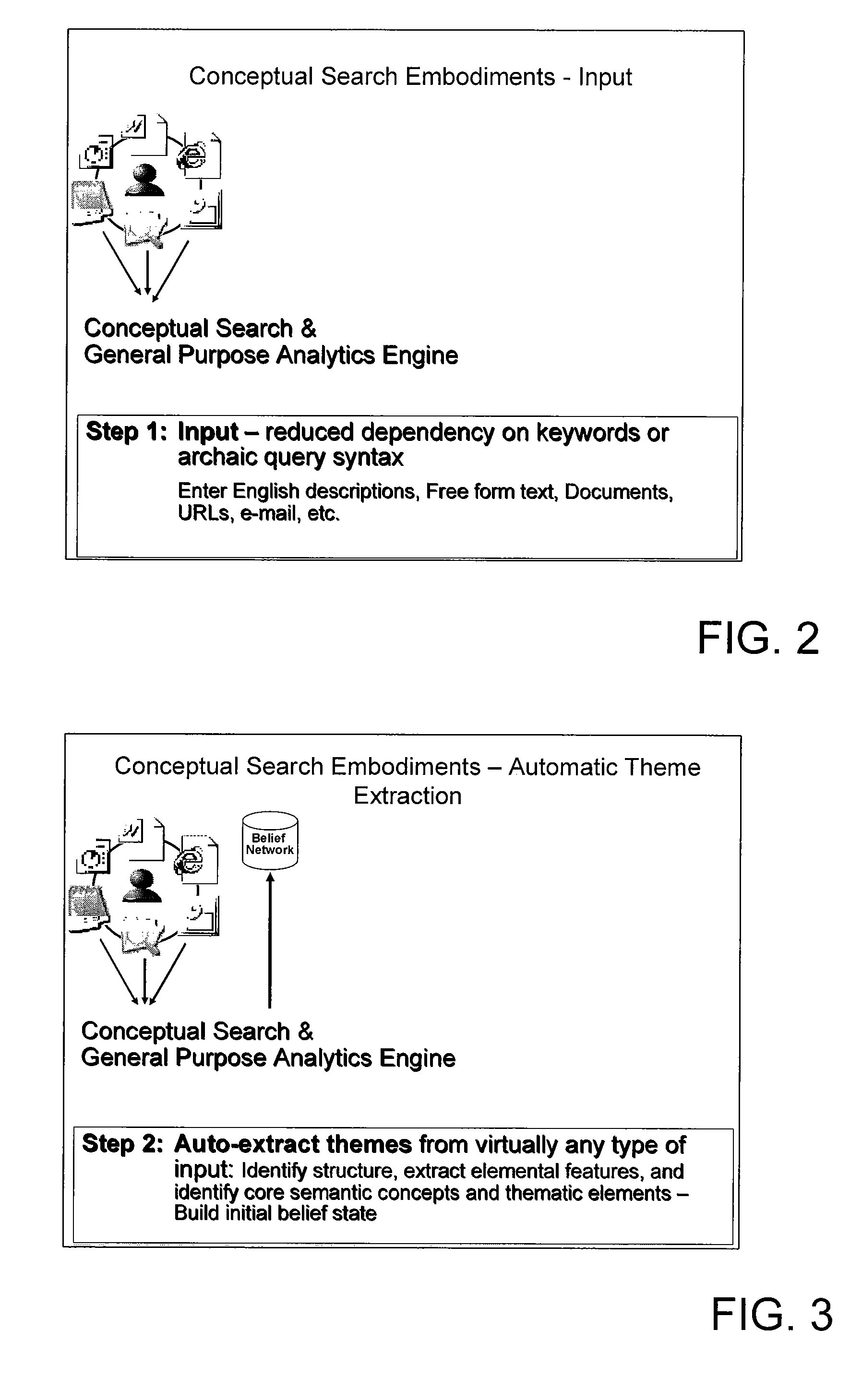Keyword searching, however, is generally ineffective due to the use of multiple terms and varying grammatical structures representing the same concepts in different documents.
Keyword searching, is also generally ineffective because the same words and grammatical structures may represent many different concepts, as distinguished only by the greater context of the discourse.
The result is poor precision (unsatisfactorily high levels of incorrect or irrelevant results (false positives)) and poor recall (are numbers of missed (false negative) associations).
In addition, these systems cannot relate information to a task and are thus limited to providing lists ranked on some non-task related means (such as anchors, links, number of references, number of hits, advertising dollars, etc.—see
link analysis systems; i.e.
PageRank, HITS, etc.).
This limitation reduces current solutions to offering tools for assisting in various steps in a
business process, a
consumer task, or the like and cannot enable the
automation of those steps or offer assistance in completing a task from start-to-finish.
Unfortunately, such full
text searching is plagued with many problems.
Since the mere inclusion of the keyword in a discourse provides very limited insight into the
subject matter, purpose, and a focus of the discourse, the results of the search are therefore not precise.
Such searching often requires refinement using a hit or miss strategy, which is often cumbersome and takes time and lacks efficiency.
Despite best efforts of users or
ranking systems, it may be impossible to identify a set of keywords that locates the best and most related material and / or effectively rank those results without any semantic level understanding or any user interest based
ranking.
Such
natural language techniques often use simple logical forms, pattern match systems, ontologies and / or rule based systems which are difficult to scale efficiently and lack precision using large quantities of information.
For example, speech-to text conversion often employs NLP techniques and, due to the amount of nonsensical output, is generally considered unusable with accuracies below 98%.
Accordingly,
natural language techniques have not been able to be scale for large complex information systems.
However, this approach has proven to be unscalable and, at best, beyond the limits of the capabilities and scope of our
current technology.
A fundamental problem with ontologies is that they try to capture “truths.” Such inferences of “truth” are defined and established through reference to the conventions associated with a particular semiotic
system in which concepts / truths are represented.
Thus, any a priori ontology of truth, while valid for some concept, may be invalid for another; thereby making the ontology impossible to predefine.
Systems that rely on accurately interpreting grammar suffer from the imperfections in natural languages that tend to cloud rather than disclose the thoughts with they
expose.
The clouding of thought resulting from the non-formal nature of natural languages makes it difficult for humans to communicate effectively.
Thus, it is difficult to accurately infer consistent interpretations of concepts conveyed in discourses.
Since the current state of
artificial intelligence is far more primitive than even the most basic human capability and, since grammatical interpretation taxes the most advanced human cognitive abilities, any
system that relies on interpreting grammar is likely decades and several orders of magnitude of technological advancements away from success.
Most data is unclassified and unstructured, making it unsuitable for current
data management technology solutions such as traditional
data mining and OLAP.
While conventional search and
categorization technologies can process
unstructured data and, given keywords or phrases, identify lists of documents referencing those phrases or build basic taxonomies based on statistical clustering of keywords or phrases, they are ineffective in complex
information extraction and analysis.
Due to the nature of language itself, this is generally not a valid assumption and thus the relationships identified by search systems are often misguided.
Further, attempts to categorize search results through automated clustering tends to produce taxonomies with mathematical relations that often have no natural interpretation and limited practical use.
More importantly, however, many if not all of these conventional systems put the burden of analysis on the user to wade through possibly irrelevant results.
The manual process is slow, expensive, error prone, and does not scale.
Drawbacks to such an analysis is that without any semantic knowledge is impossible to perform any type of analysis beyond simple relationship establishment based on word frequency counting.
Additionally, LSA is inherently more complex than keyword indexing systems.
As with many systems based on simplification of idealized systems, controlled experimental results of LSA do not accurately reflect the results of real-world applications.
Specifically LSA's strength, its lack of need for knowledge from
perceptual information about the physical world, from
instinct, or from experimental intercourse, feelings, or intentions, also limits its success in practical applications.
Because LSA induces it's representation of the meaning of words and passages solely from analysis of text alone, it is incapable of identifying related concepts in a generalized case.
This results from the fact that grammatical representations of similar expressions of thoughts can vary dramatically, making it impossible to identify a single set of words which will be use consistently to express the same thought in any given context.
 Login to View More
Login to View More  Login to View More
Login to View More 


